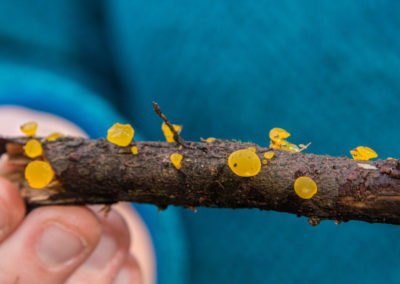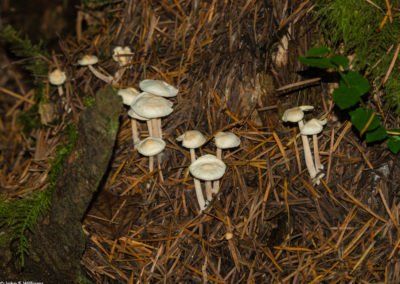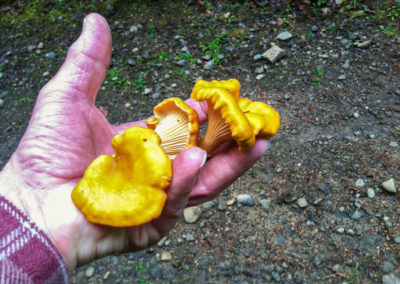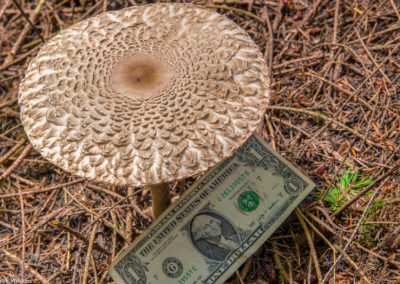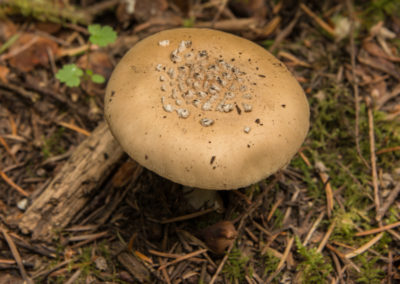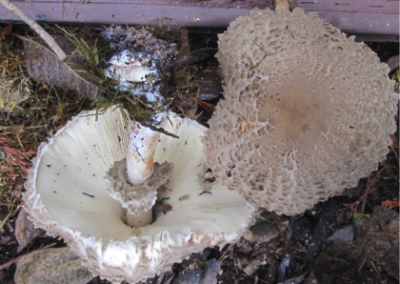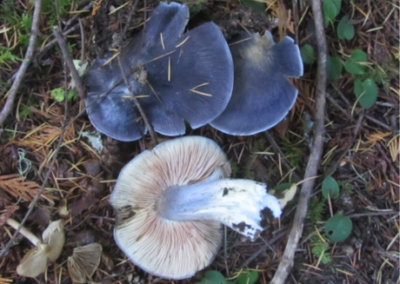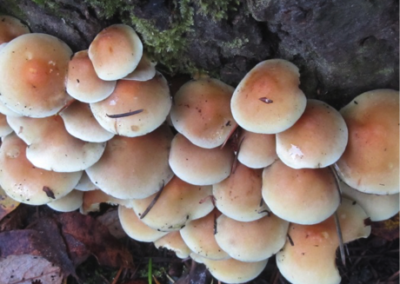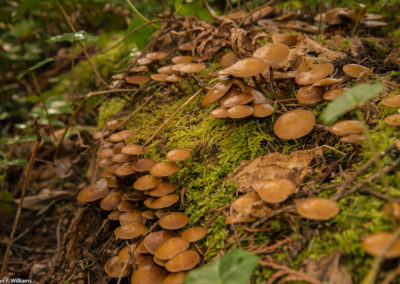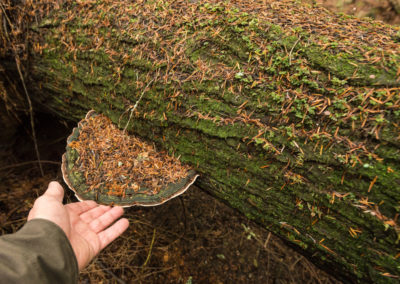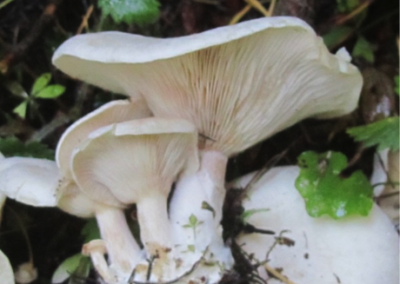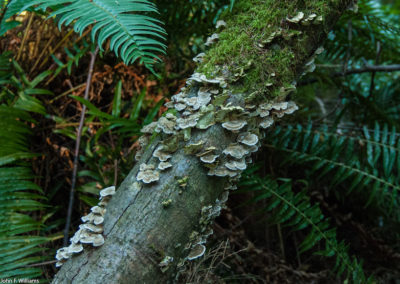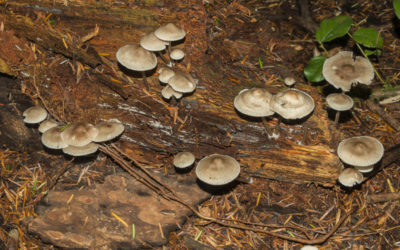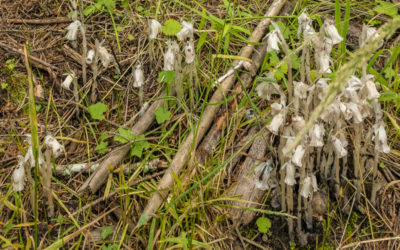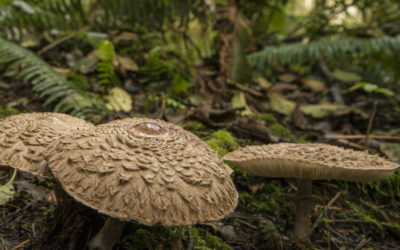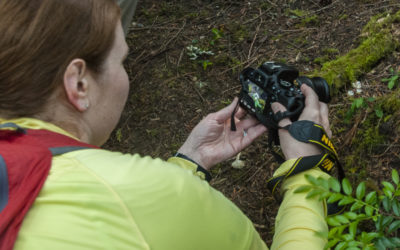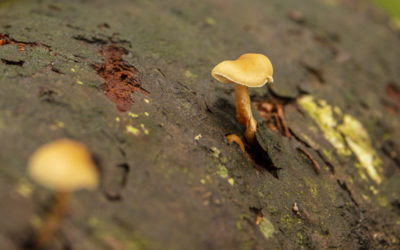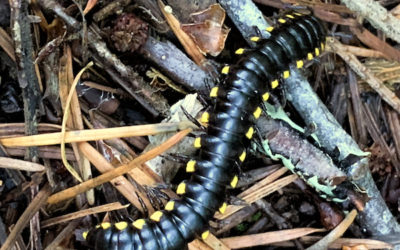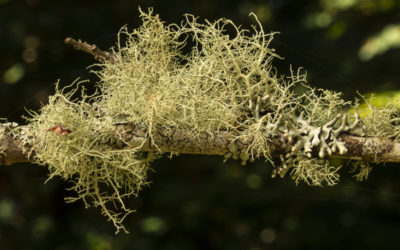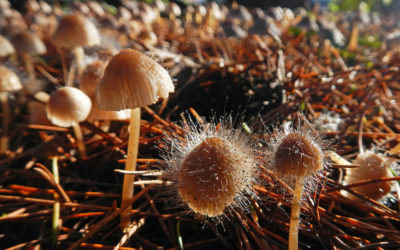SURVIVAL OF OUR WOODS
DEPENDS ON MUSHROOMS
by Olaf K. Ribeiro, Autumn 2019
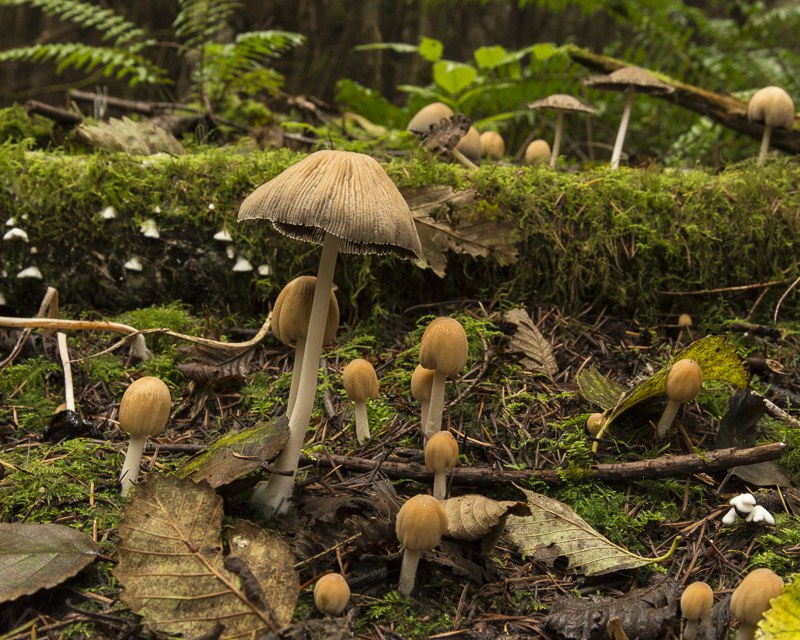
SURVIVAL OF OUR WOODS
DEPENDS ON MUSHROOMS
by Olaf K. Ribeiro, Autumn 2019
Have you ever wondered about the mushrooms you see in the woods? Actually, there is much more to mushrooms than the colorful forms that so delight us during our walks.
These mushrooms are the above-ground manifestations of fungi that also consist of networks of underground filaments known as mycelium. These mycelia can spread over vast distances. In fact, scientists in Oregon have discovered that just one species of fungus, known as the honey mushroom or Armillaria, has spread through 2,384 acres of soil in Oregon’s Blue Mountains. This particular mushroom is now recognized as the world’s largest organism.
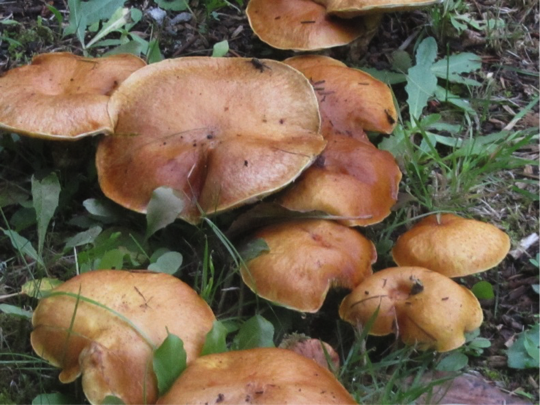
Honey Mushroom (Armillaria) photo by Olaf Ribeiro.
Mushrooms are the fruiting bodies of the fungi, and they range in size from quite small to over a foot in diameter. They are also quite prolific. Every year, fungi make 50 million tons of airborne spores—enough to coat every square millimeter of Earth’s surface with 1,000 spores each. A spore is a tiny, typically one-celled, reproductive unit capable of giving rise to a new individual. The mass of those spores would balance 137 Empire State Buildings, 527 USS Enterprises (the aircraft carrier, not the starship) or about 20 million Oscar Mayer Weiner mobiles!
The fungi that give rise to mushrooms can be either beneficial or harmful to trees.
Some of the mushrooms we commonly encounter in the woods form mutually beneficial (symbiotic) relationships with trees through their mycelium interacting with tree or plant roots. Roots depend on the mycelium to provide nutrients, such as phosphorus, in a form that the roots can take up for continued growth. In return, the fungi obtain nitrogen, carbon, and other essential nutrients from the roots.
The area surrounding the roots is called the “rhizosphere”. Because the mycelium of these fungi (in Greek “mykes”) is intimately associated with the rhizosphere of trees and woody plants species, they are said to be mycorrhizal. Root secretions in the rhizosphere have a great influence on attracting mycorrhizal fungi to tree roots and other woody plant species.
Over 85% of plants and trees depend on mycorrhizal fungi for continued growth. Our common tree species such as Douglas fir, Western Red Cedar, and Maple would not survive without the help of mycorrhizae.
Mycorrhizal fungi emerge from soil with a variety of mushroom structures that belong to the fungal kingdom Basidiomycota. These include common woodland mushrooms, such as Amanita spp., Agricus spp., Russula spp., Tricholoma spp., and Naematoloma capnoides.
Non-mycorrhizal fungi, on the other hand, are usually pathogenic, i.e., they infect and kill trees rather than having a symbiotic relationship with them. A common non-mycorrhizal fungus is the previously mentioned root- and wood-rotting honey mushrooms (Armillaria mellea). Other non-mycorrhizal fungi that are commonly seen in the woods include the trunk rotting large shelf fungi (Ganoderma sp. and Fomitopsis sp.), mushrooms that feed on dead organic material (such as Leucoagaricus naucinus), and smaller layers or chip-like mushrooms that grow on wood (Stereum sp.). These mushrooms break down plant materials and return their carbon and minerals into a usable state for those plants that do not have mycorrhizal relationships.
 You can learn more about the beneficial and pathogenic mushrooms in the article, Think Like a Mushroom, in this issue
You can learn more about the beneficial and pathogenic mushrooms in the article, Think Like a Mushroom, in this issue
Without these mushrooms, fallen trees would not decay and return essential materials back to the soil. Thus we can see that mushrooms are capable of a complex interplay that can both compromise and benefit the forests.
So, what would our woods be like without mushrooms?
The simple answer is…we would not have any woods!
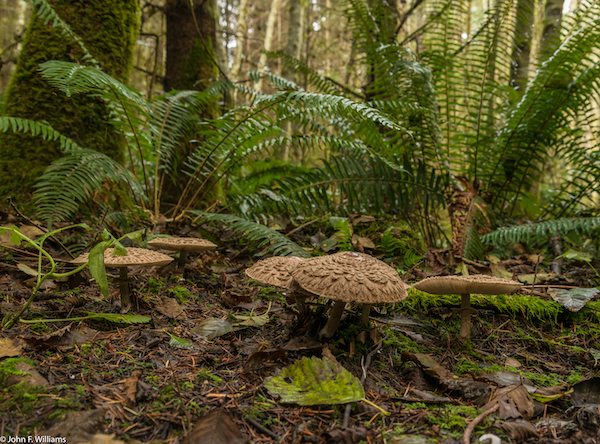

Olaf K. Ribeiro is a plant pathologist with over 30 years experience in diagnosing plant & tree health problems, in the U.S and overseas. He has published over 50 scientific papers in refereed international journals and also published several popular articles on plant diseases and on the dynamic interactions between microbes. He has been an invited speaker at numerous National & International meetings and conferences concerning the dynamics of microbes and root interactions. He is the author of two textbooks and co-author of another with Professor Don Erwin. He has been featured in the Wall Street Journal and the NBC Today show and also featured in Joel Sackett’s book, In Praise of Island Stewards.
Table of Contents, Issue #5, Autumn 2019
Think Like a Mushroom
by David Ansley, Autumn 2019 Photos by John F. Williams, except where notedPhoto by John F. WilliamsBy David Ansley, Autumn 2019 Photos & video by John F. Williams except where notedMushrooms? I don’t know how I missed them. I grew up deep in a second-growth...
Ghost Plant
AN UNDERSTORY THIEF by Adelia E. Ritchie, Autumn 2019 Photos by John F. Williams except where notedAN UNDERSTORY THIEF by Adelia E. Ritchie, Autumn 2019 Indian Pipes “Stop,” I said. “Indian Pipes.” Ghostly white, tiny vampires reaching up from moist loam...
Mushroom Poetry
by Mahathi Mangipudi, Autumn 2019 Photos by John F. Williams, except where notedBy Mahathi Mangipudi Autumn 2019 Photos by John F. Williams except where notedEquinox ~ s p r i n g ~fragile buds twist and turn,bloom under warm rays of pastel goldnutrients taken from...
Foto Tour 1
Showcase of Participant Photos from June 4, 2019 Showcase of Participant Photos from June 4, 2019 On June 4, 2019, WSU Extension in Kitsap County hosted a Forest Foto Expedition led by John F. Williams. We met at Newberry Hill Heritage Park in Silverdale. A park...
Mushroom Photo Essay
by John F. Williams, Autumn 2019 Photos & video by John F. Williams except where notedBy John F. Williams, Autumn 2019 Photos & video by John F. Williams except where notedintroduction This issue contains a couple of very informative articles about mushrooms...
Yellow Spotted Millipede
by Catherine Whalen, Autumn 2019A couple of yellow-spotted millipedes spotted in North Kitsap Heritage Park in May. Photo by John F. WilliamsA couple of yellow-spotted millipedes spotted in North Kitsap Heritage Park in May. Photo by John F. WilliamsBy Catherine...
Lichens
by Sara and Thomas Noland, Autumn 2019Photo by John F. Williamsby Sara and Thomas Noland, Autumn 2019 In the fantastical world of fungus, it’s hard to stand out. But the lichens have managed to do just that. You probably see lichens every day, whether in your yard,...
More Mushrooms: Another Photo Essay
by Catherine Whalen, Autumn 2019 Photos & video by Catherine Whalen except where notedBy Catherine Whalen, Autumn 2019 Photos & video by Catherine Whalen except where notedart imitates lifeI found the above mushroom in my front yard one afternoon and it...
PLEASE HELP SUPPORT
SALISH MAGAZINE
DONATE
Salish Magazine contains no advertising and is free. Your donation is one big way you can help us inspire people with stories about things that they can see outdoors in our Salish Sea region.
We also don't advertise Salish Magazine, so please spread the word of this online resource to your friends and colleagues.
Thanks so much for your interest and your support.
We also don't advertise Salish Magazine, so please spread the word of this online resource to your friends and colleagues.
Thanks so much for your interest and your support.

